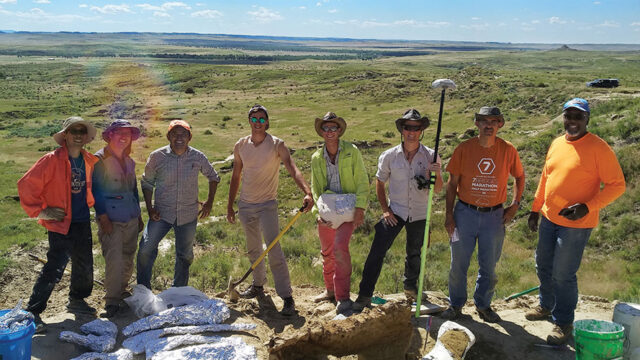The five dynamics of leader growth.

“There is no issue in our church more important than . . . leadership—none. We may have some issues that are equal to it, but none is more important.”—Christon Arthur, Ph.D., Provost, Andrews University.
We find much agreement around the world: leadership is crucial to the future of our church. Yet while organizational leaders are crucial, God wants each one of us to be an influencer (Acts 1:8). This becomes clear when we see how Jesus trained the future leaders of the church—the disciples.
In this article we share an approach to leadership development that Jesus modeled and is supported by the leading literature on how leaders grow. We encourage readers to experiment with these principles and support others to grow as leaders.
Jesus and His Growing Leaders
To Jesus, it seemed that nothing was more important to the advancement of His kingdom than this expanding group of leaders. During His brief time on earth, He was intentional with both their selection and training. In short, Jesus made leadership development a priority in His ministry. Perhaps we should as well.
When Jesus was on earth, He called ordinary people and created a new community of leaders, the disciples. This close-knit group learned with each other as they learned from the Master Teacher. Ultimately, their experiences with Jesus and each other proved to be just what was needed for growing leaders God could use to reach the world.
Notice that early in their training Jesus did not gather His disciples into a classroom to lecture, although interestingly, He did have extensive instructions for them at the end of His earthly ministry (John 13-17). Rather, He gave the invitation: “Follow Me” (Matt. 4:19). This call to action launched their journey as growing leaders and began to reveal Jesus’ action-oriented approach to leader development. The extraordinary results became clear only after His ascension, when people “took note that these [ordinary] men had been with Jesus” (Acts 4:13, NIV). Thankfully, Jesus is still in the business of developing leaders today (Heb. 13:7, 8).
The practices Jesus used to develop leaders are timeless. Remarkably, they were common activities built on key principles of human growth. Yet they were combined with the presence of the Master Himself. Today the combination of these practices and the activating power of the Holy Spirit in the life of a growing follower of Christ provide an opportunity for exponential growth in one’s leadership; we have seen this combination work time after time.
The Five Dynamics of Leader Growth
The Five Dynamics of Leader Growth are based on the components found in how Jesus developed His disciples. Yet they are also consistent with learning principles found in the book Education, current research and theory on adult learning, and the practice of our leadership programs in the School of Leadership at Andrews University. To be practical and memorable, they have been organized into a simple graphic. Below we briefly describe each dynamic and include a thought on its practical use.
Ideas: Jesus shared the principles and practices of His kingdom. While His disciples learned the new, they also needed to unlearn. He drew new ideas and practical lessons from Scripture, nature, and daily life. Thus, to grow, leaders must engage with useful, new ideas.
Practice: What Jesus taught, He practiced; and He encouraged His disciples to follow His example. Action is a fundamental principle of “real development.” Ellen White emphasizes, “It is the use [we] make of knowledge that determines the value of [our] education.”1 To grow ourselves and support the growth of other leaders, we should find ways to put ideas into practice.
Reflection: Jesus encouraged His disciples to think (Isa. 1:18). He asked questions that required them to reflect on their actions and thoughts (Mark 9:33). He pointed to nature as a reservoir for leadership reflection; “Consider the lilies” (Luke 12:27). Paul also exhorts us to “examine ourselves” (2 Cor. 13:5). Reflection is a key to learning. Reflecting on our ideas and experiences provides leaders with an essential tool for integrating thought and action.
Community: In the active learning space Jesus created with His disciples it was a safe place to bring up their questions (Acts 1:6), puzzlements (Mark 6:30), and issues that confronted them (Matt. 15:33). Today’s leaders should follow this same community approach to learning. That is why small groups “as a basis of Christian effort” is still part of the “plan that has been presented before me by One who cannot err.”2 Learning groups (as we call them) should be safe and active; they are essential to support exponential growth in leaders.
Truth in Love: Finally, the center of the graphic represents the ultimate dynamic—Jesus. He is the truth, and God is love. Thus, truth in love is the heart of all true learning and growth. While these five dynamics were interwoven in the leadership development practices of Jesus, they still provide direction for our leadership growth today.
Globally, leadership development is a billion-dollar enterprise. Academic institutions and training programs often offer tools that promise leadership success. We certainly need a special set of tools to navigate the growing complexity we face as church leaders today. But even the best programs will fall short of their full effectiveness without an experiential approach and presence of Jesus.
These five dynamics are deceptively simple. Still, they are challenging to integrate into a meaningful approach to developing leaders. Be intentional about growing your own leadership. Then support the growth of others. We are commissioned, “Go . . . and make disciples”—go and make leaders for God’s kingdom (Matt. 28:19).
1 Ellen G. White, The Ministry of Healing (Mountain View, Calif.: Pacific Press Pub. Assn., 1905), p. 402.
2 Ellen G. White, Evangelism (Washington, D.C.: Review and Herald Pub. Assn., 1946), p. 115.








